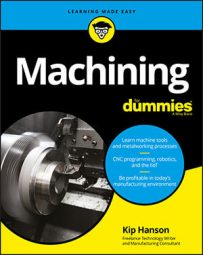- Households the world over don't have three-dimensional printers in their kitchen, ready to whip up a ray gun or a cup of espresso like the replicators in Star Trek (although a growing number of homeowners now have three-dimensional printers in their garages and workshops).
- Auto repair shops aren't printing up replacement parts as you pull in to the parking lot, and department stores aren't producing bespoke tennis shoes and bedside tables (yet).
- Nor have machine shops embraced three-dimensional parts printing as many thought they would, preferring instead to make parts the "old-fashioned" way (although many are moving in additive's direction).
Granted, you won't be three-dimensional printing new lawn ornaments anytime soon. And the vast majority of parts for cars and airplanes will continue to be made using conventional techniques, at least until those modes of transportation are obsoleted by something better (teleportation, perhaps). Fasteners, folding chairs, Frisbees, and farm implements — anything very large, very high volume, or very cheap to make will remain, for the foreseeable future at least, firmly in the traditional manufacturing world.
What will change is the production of those parts that are difficult or even impossible to machine via subtractive manufacturing processes (that is, machining). That's because additive manufacturing laughs at complexity. Printing parts that resemble spider webs, honeycombs, seashells, and a host of other "organic" shapes is about as difficult as winning a hand of Three-card Monte is to a con artist.
Who cares about shapes like these? Why, anyone who wants to make parts that are stronger, lighter-weight, and easier to assemble does. Aircraft engine manufacturers use three-dimensional printing to reduce part counts in fuel-injector assemblies. Orthopedic surgeons use three-dimensional printers to make patient-specific hip joints and cranial repair plates. Jewelers create custom belly-button rings and automakers prototype aerodynamic body parts with it. And soon, well within your lifetime and mine, people will routinely be printing everything from circuit boards and custom-fit solar cells to apartment buildings and human body parts. Still think it's a boondoggle?
As a rule, three-dimensional printers work by building parts one layer at a time, usually from the bottom up. It does so by slicing three-dimensional computer-aided design (CAD) models into paper-thin layers, then transmitting the coordinates of these shapes to a laser or movable dispensing device. If the former, a layer is cured, fused, or melted via laser or UV light, then fresh material is spread across the top of the burgeoning workpiece and the process repeated. If the latter, each layer is simply drawn one at a time by a high-tech version of a hot glue gun, dispensing material as it goes. UV curable resins can be used, as well as powdered metal such as aluminum or 17-4 stainless steel, and engineering grade plastics like ABS, Nylon, and PEEK.

